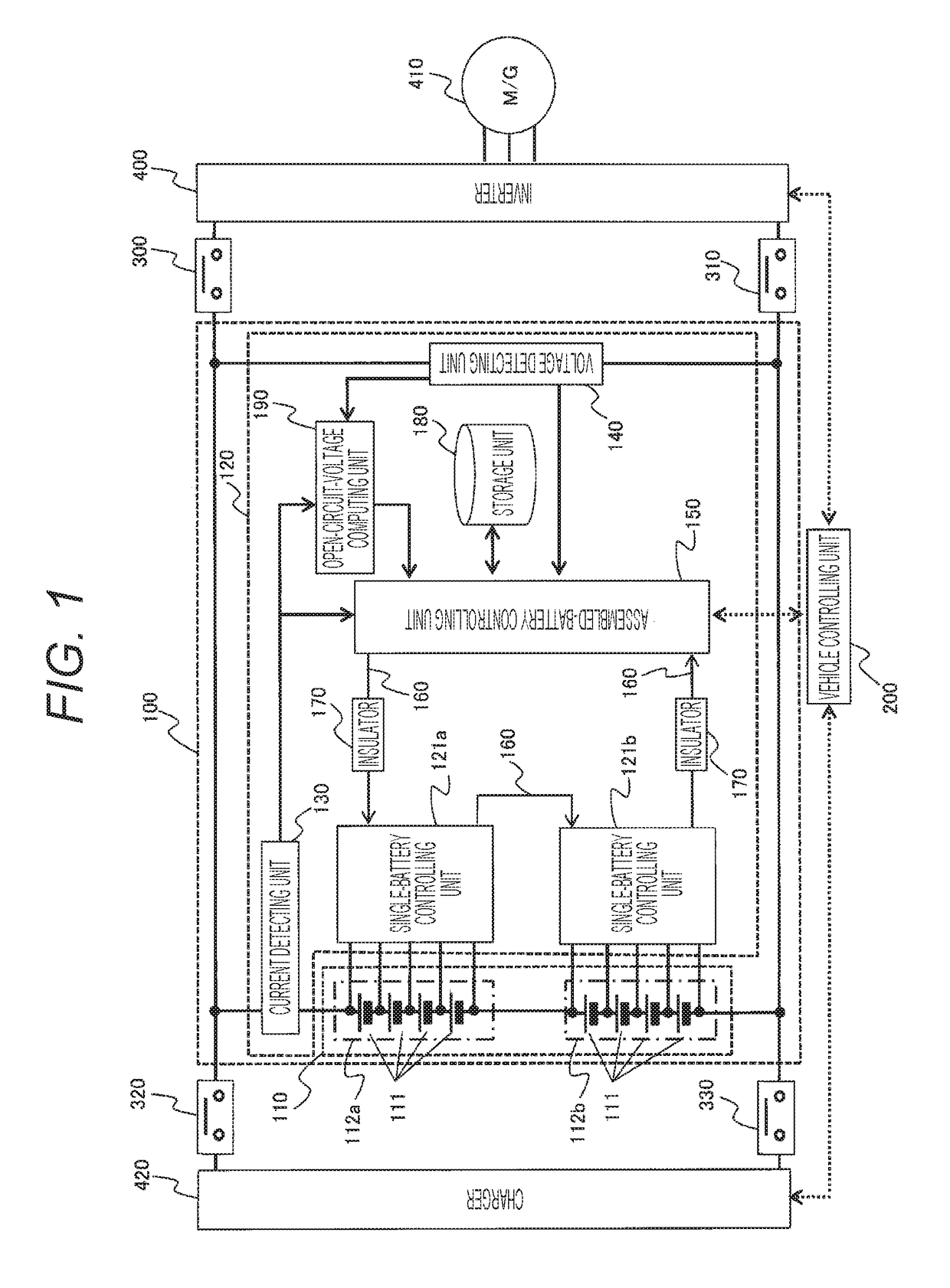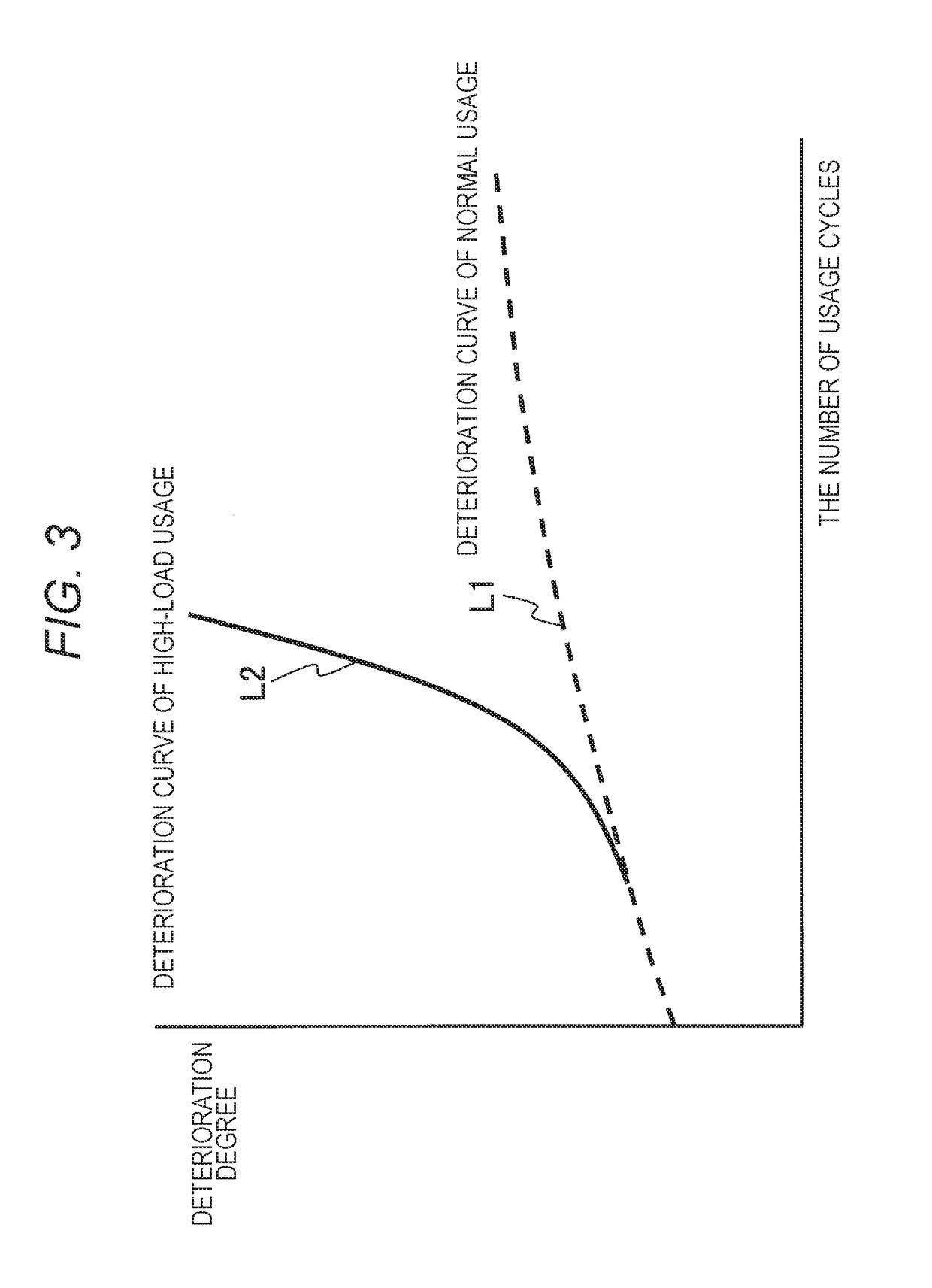Battery controlling device
a battery control and battery technology, applied in secondary cells, battery servicing/maintenance, instruments, etc., can solve the problems of deterioration of the performance originally possessed by the secondary battery, inability to fully exert the performance, and extreme difficulty in precisely measuring the temperature in the vicinity of an electrolysis solution or an electrode directly related to unevenness of ions, so as to prevent deterioration of the performance of the secondary battery.
- Summary
- Abstract
- Description
- Claims
- Application Information
AI Technical Summary
Benefits of technology
Problems solved by technology
Method used
Image
Examples
Embodiment Construction
[0016]Hereinafter, an embodiment of the present invention will be described based on drawings. In the following embodiment, a case in which the present invention is applied to a battery system, which constitutes an electric power source of a hybrid vehicle (HEV), is taken as an example for description.
[0017]Moreover, in the following embodiment, a case in which a lithium-ion battery is employed as a secondary battery is taken as an example for description. However, other than that, a nickel-hydrogen battery, a lead battery, an electric double-layer capacitor, a hybrid capacitor, etc. can be used. Note that, in the following embodiment, an assembled battery is formed by serially connecting single batteries. However, an assembled battery may be formed by serially connecting parallelly-connected single batteries, or an assembled battery may be formed by parallelly connecting serially-connected single batteries.
[0018]FIG. 1 is a block diagram showing a battery system 100 according to th...
PUM
| Property | Measurement | Unit |
|---|---|---|
| time | aaaaa | aaaaa |
| time | aaaaa | aaaaa |
| time | aaaaa | aaaaa |
Abstract
Description
Claims
Application Information
 Login to View More
Login to View More - R&D
- Intellectual Property
- Life Sciences
- Materials
- Tech Scout
- Unparalleled Data Quality
- Higher Quality Content
- 60% Fewer Hallucinations
Browse by: Latest US Patents, China's latest patents, Technical Efficacy Thesaurus, Application Domain, Technology Topic, Popular Technical Reports.
© 2025 PatSnap. All rights reserved.Legal|Privacy policy|Modern Slavery Act Transparency Statement|Sitemap|About US| Contact US: help@patsnap.com



